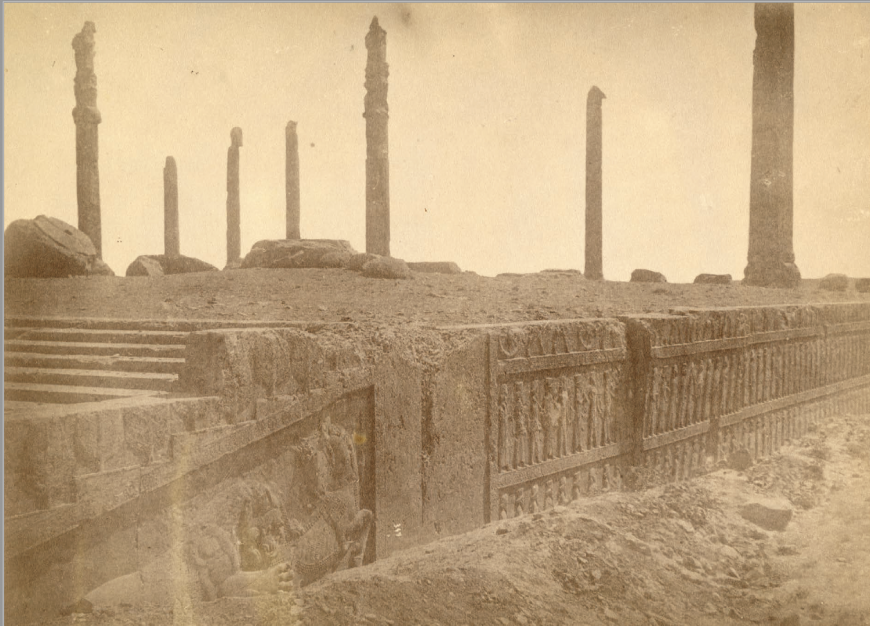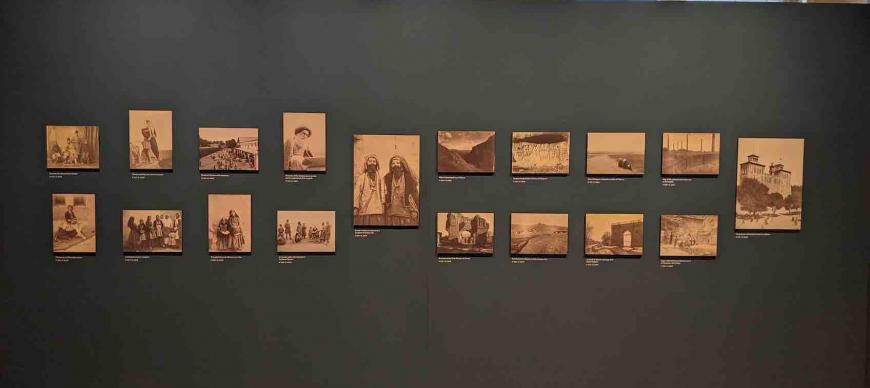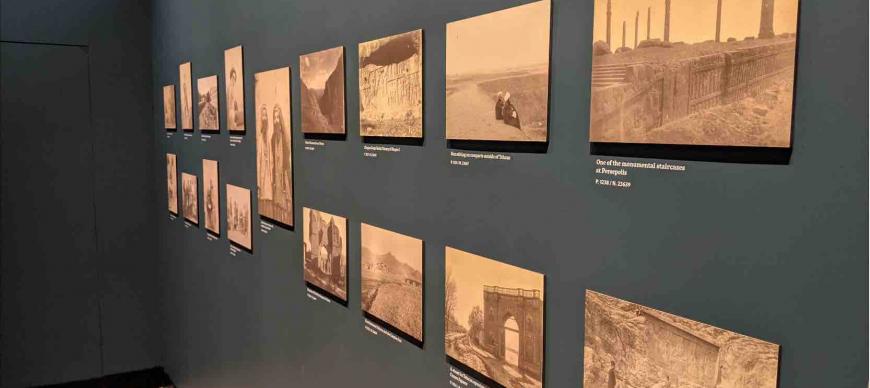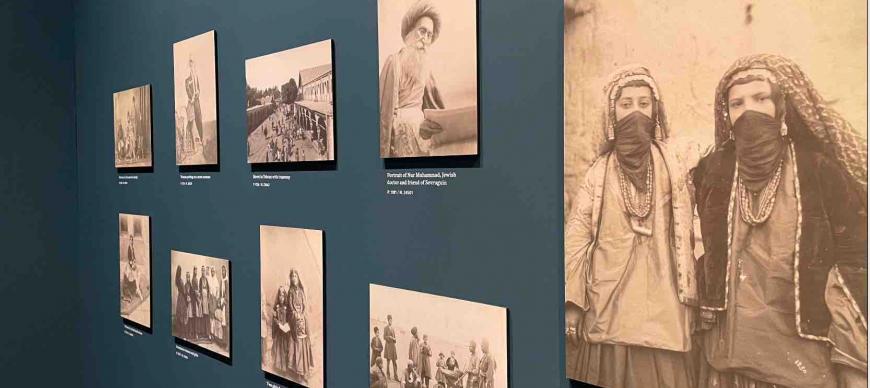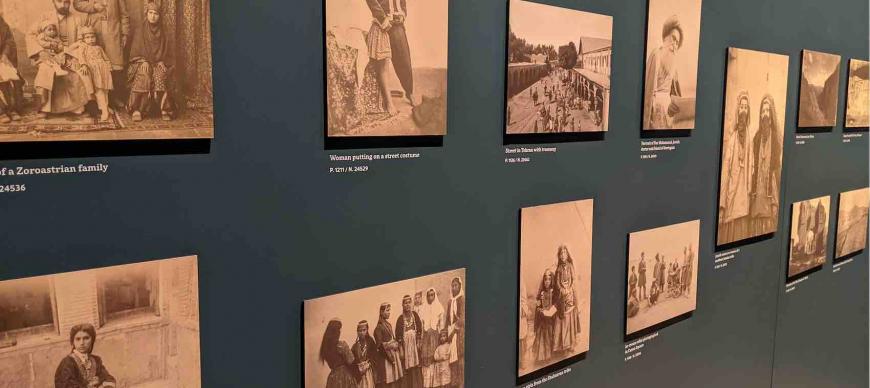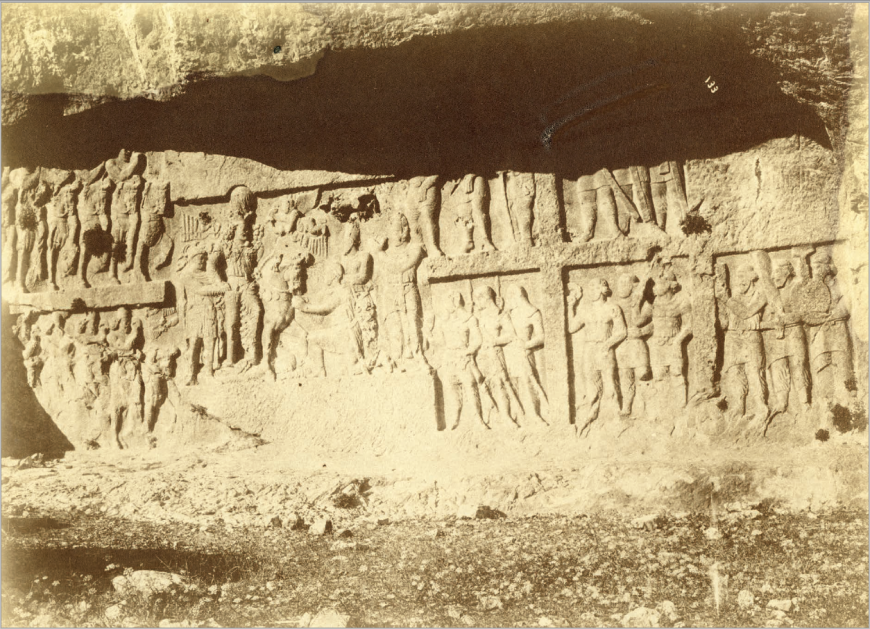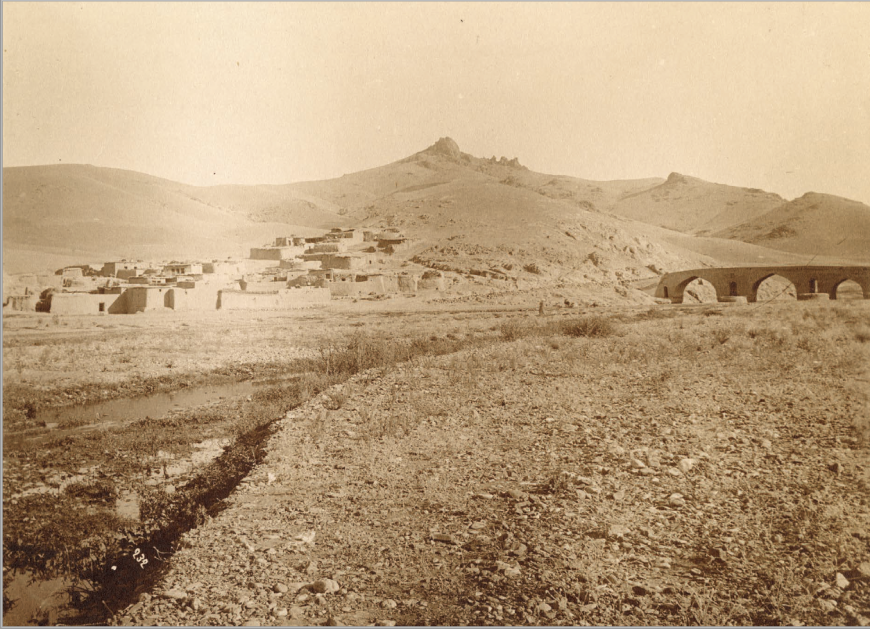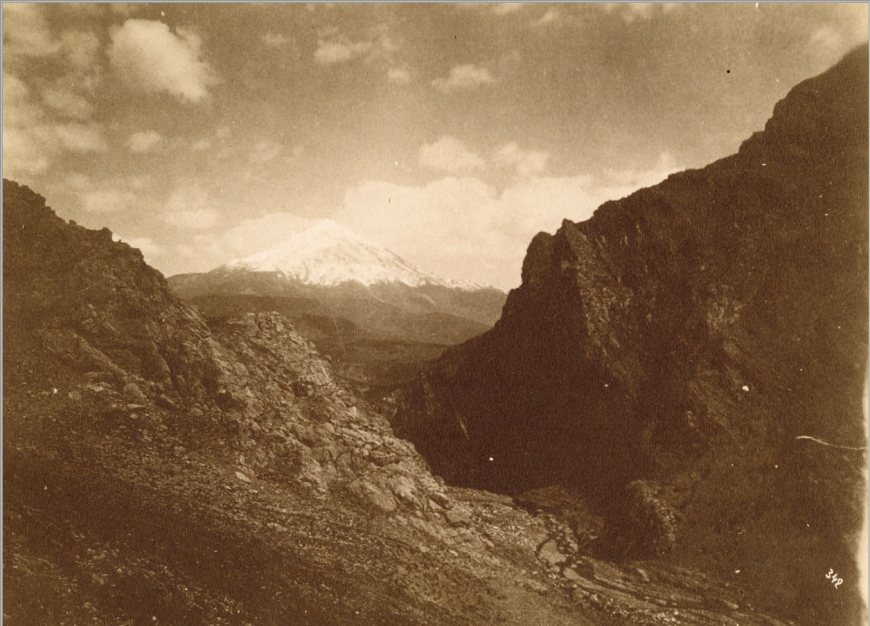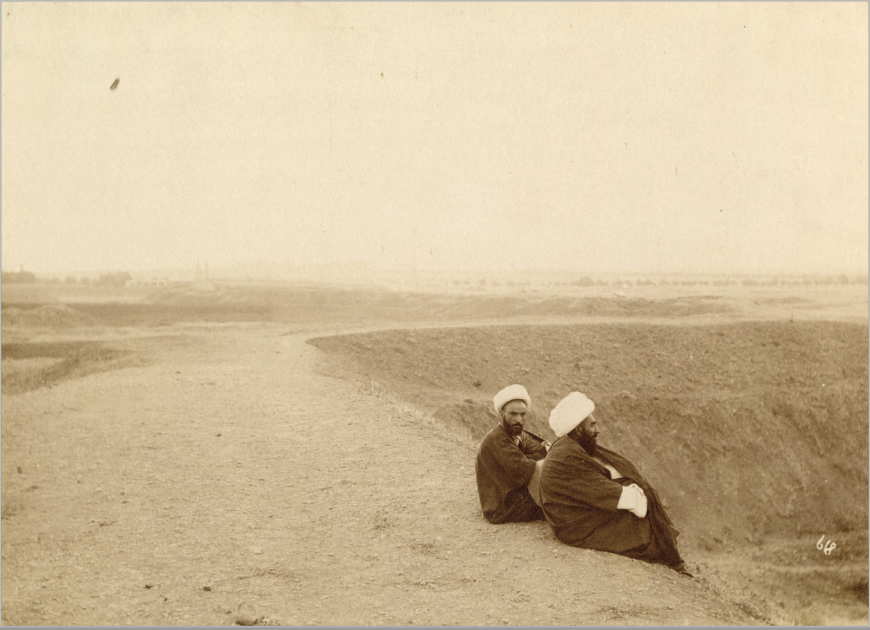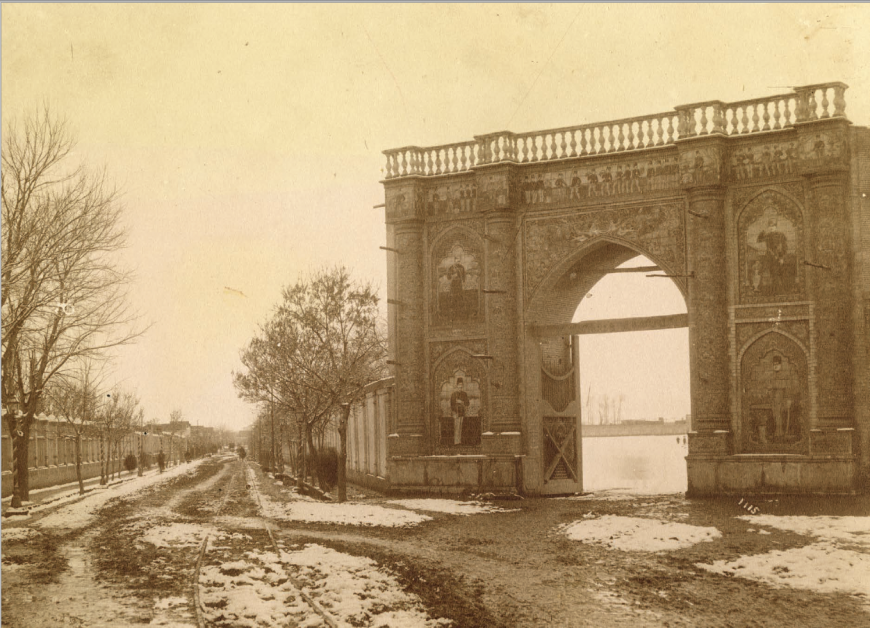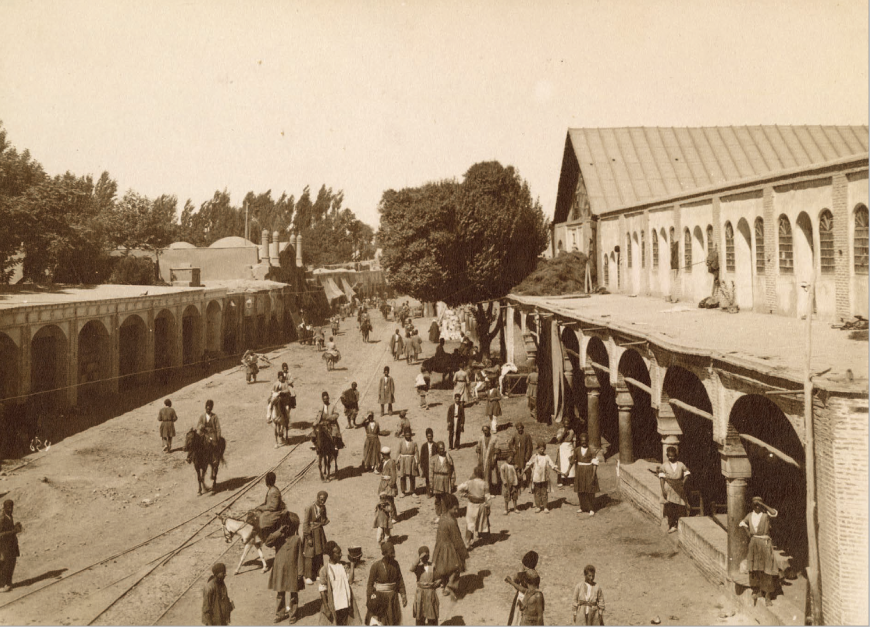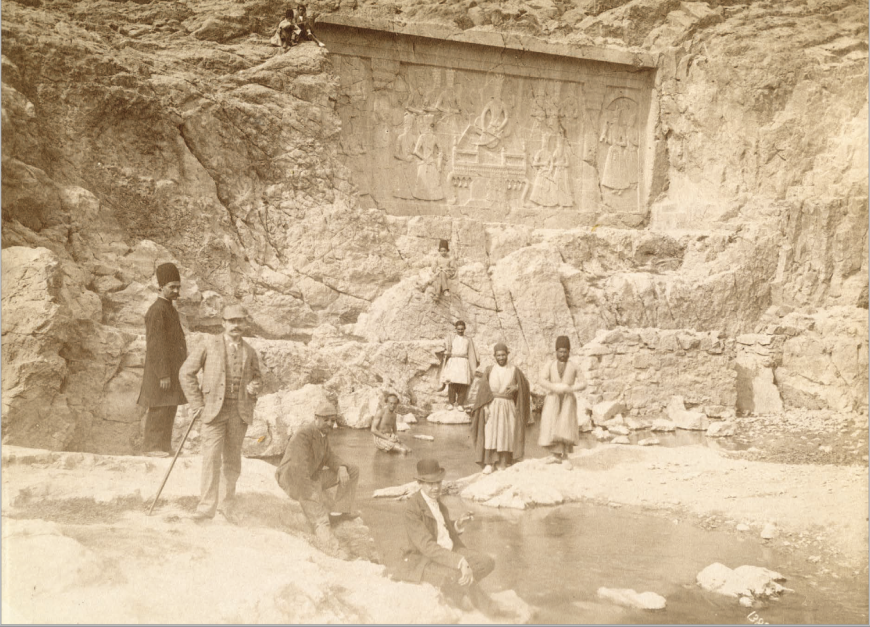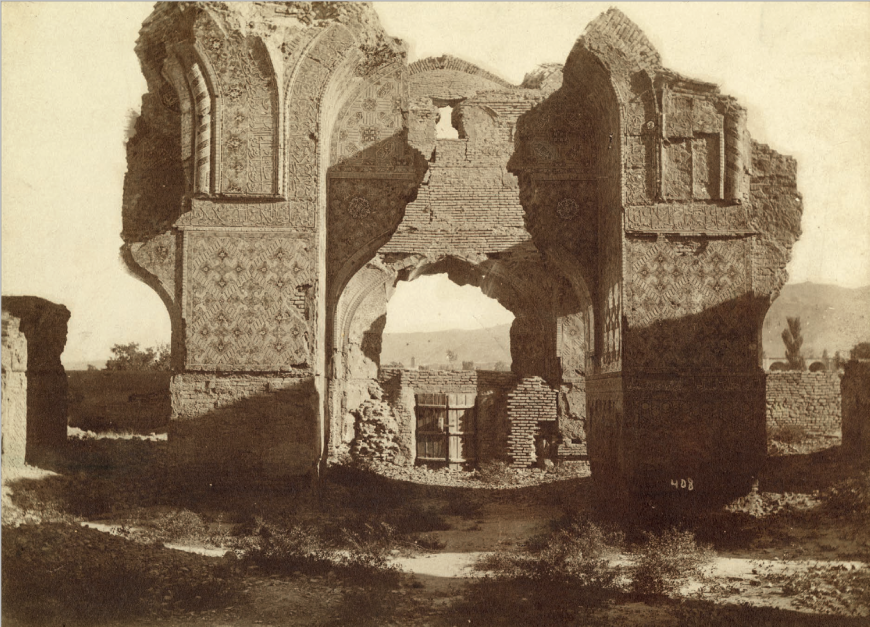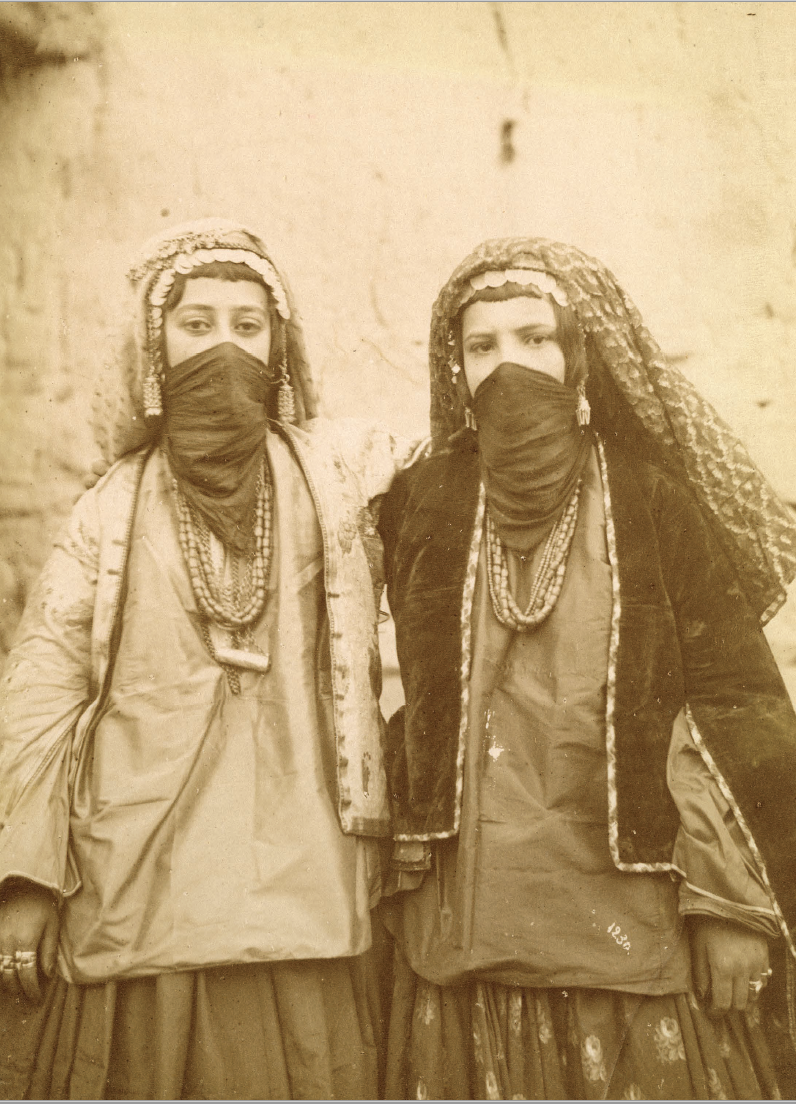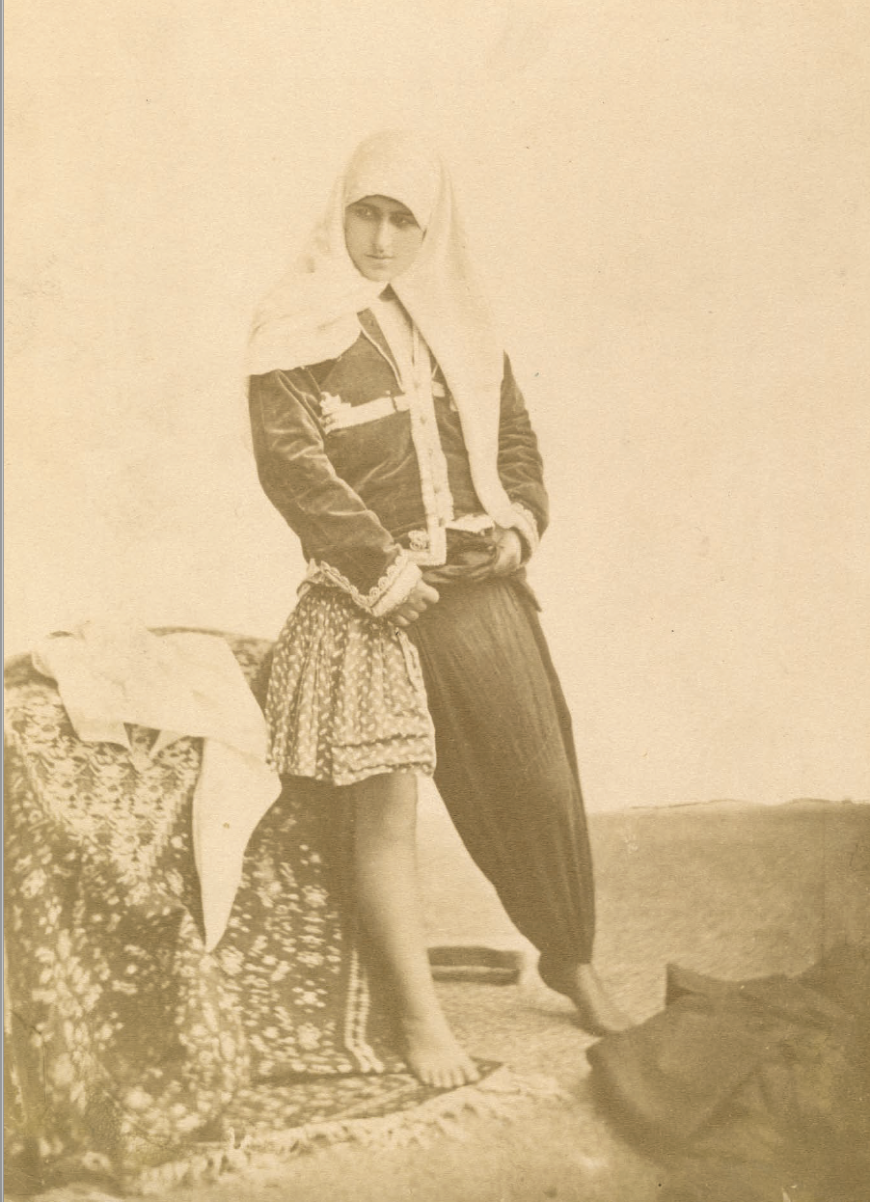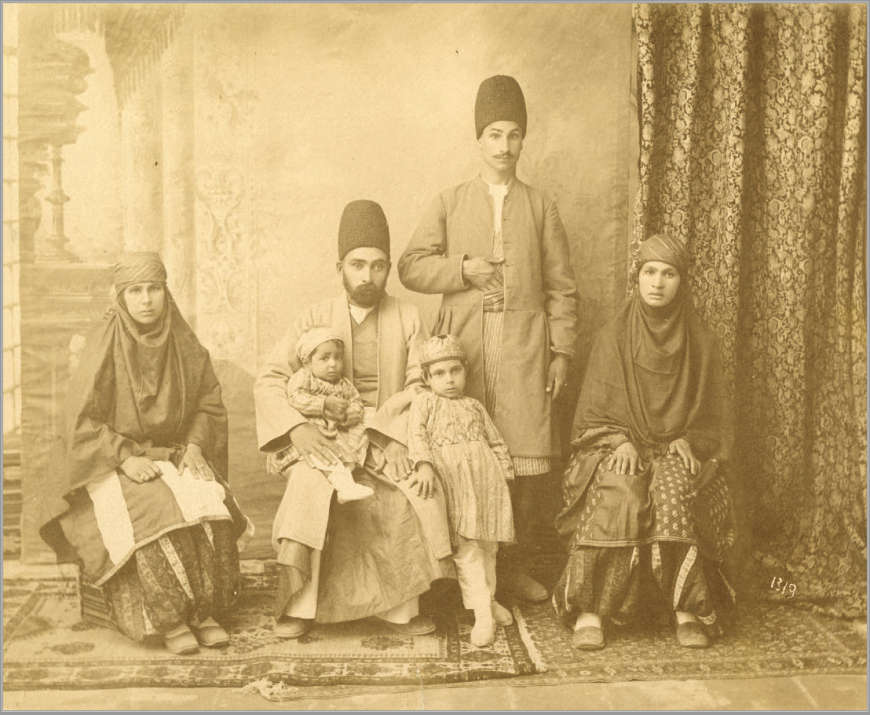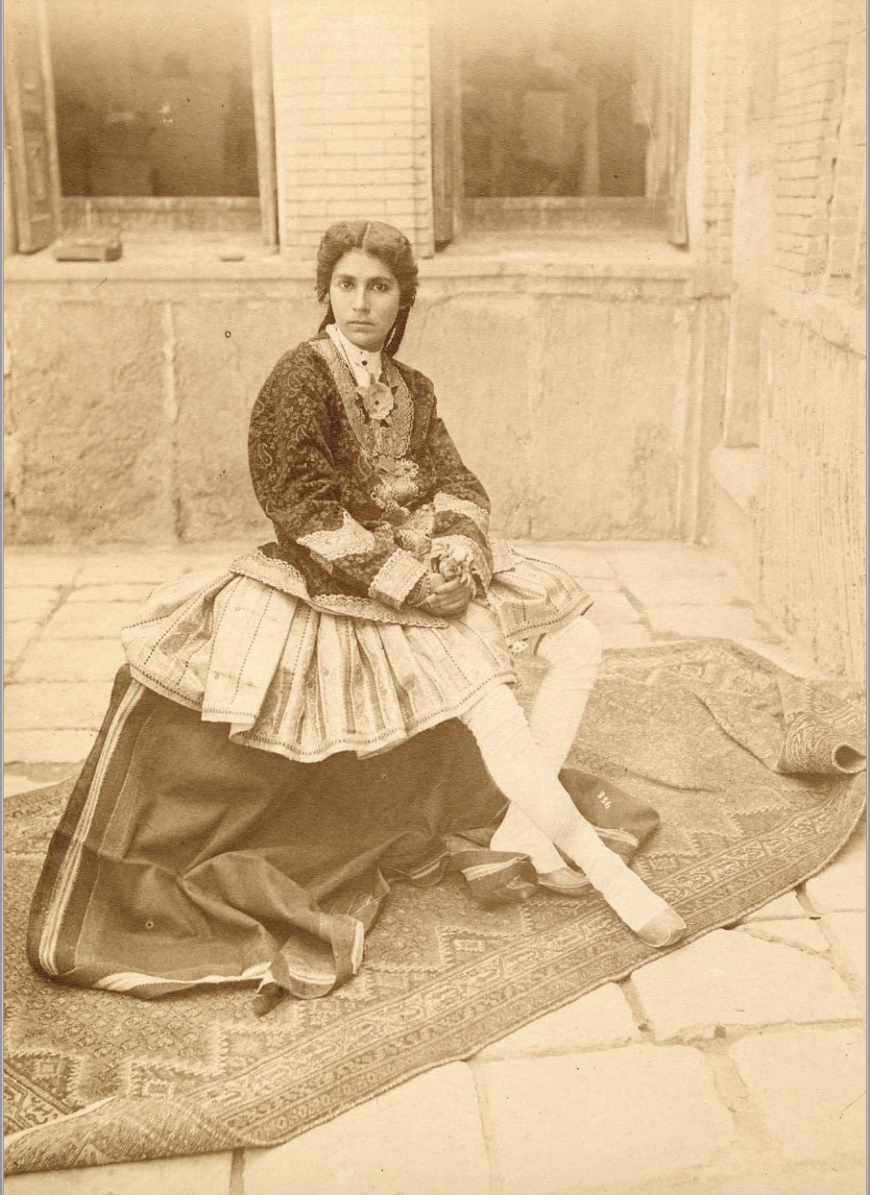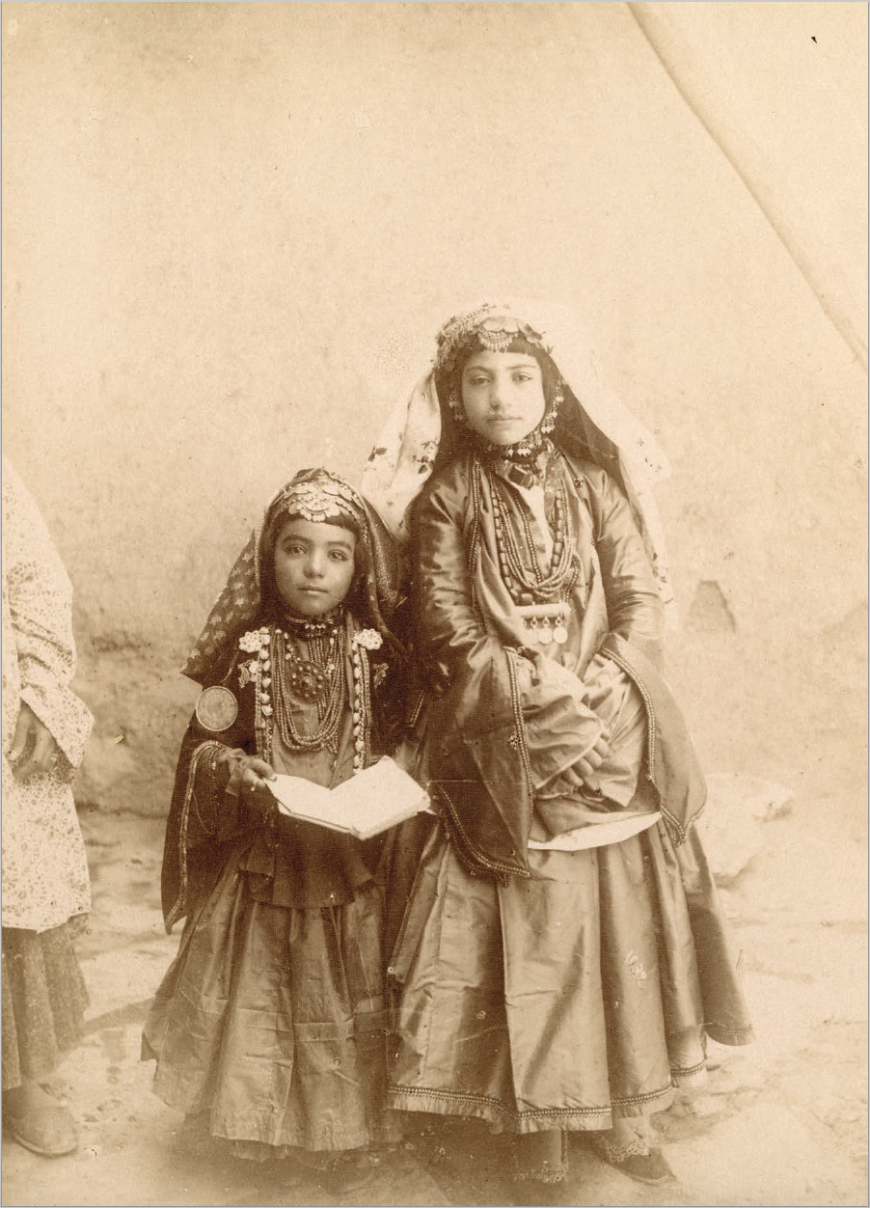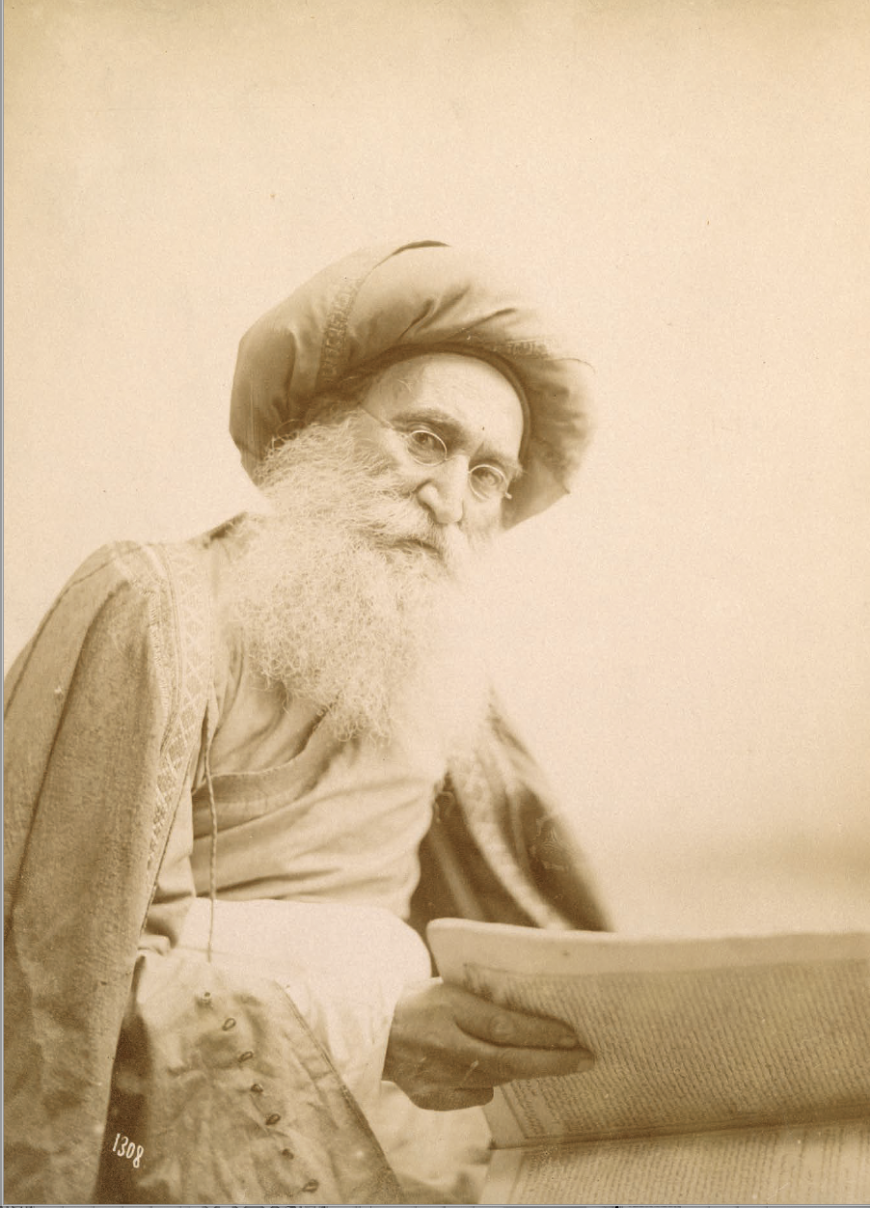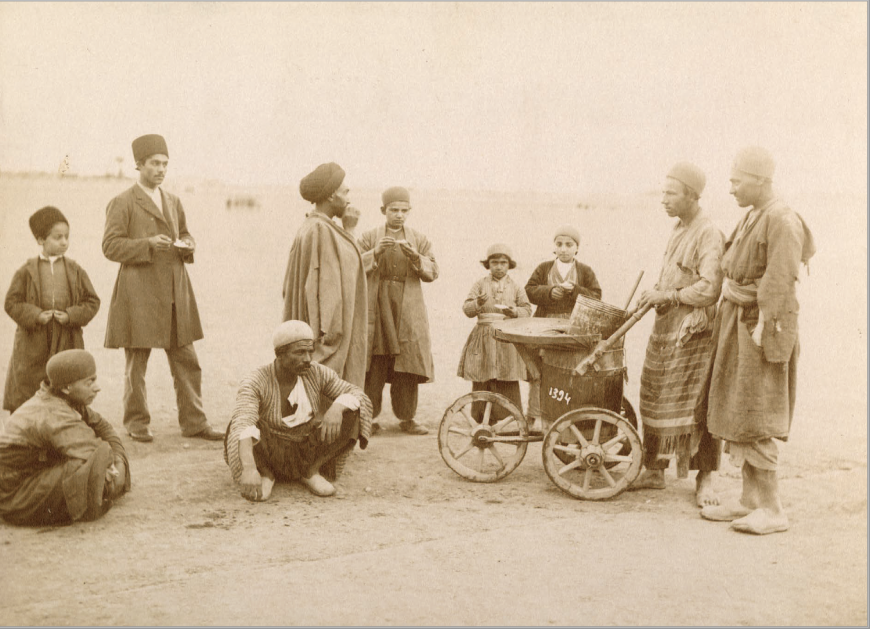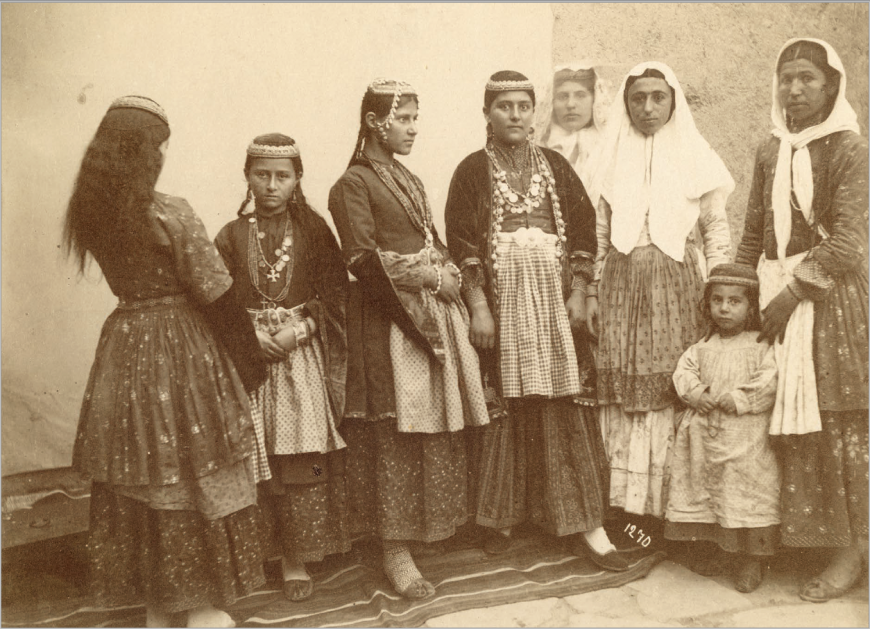The Iran that Sevruguin photographed at the end of the nineteenth century was in the midst of change. During Nasir el-Din’s close to fifty-year reign, the country was introduced to new Western technologies, such as photography, trains, and trams, as well as women’s fashion. Sevruguin photographed these modern innovations in addition to more traditional Iranian scenes, including Iranian monuments and material culture such as tramways and trains. He also adopted, yet diverged from, approaches that were common to Western photographers seeking to document Iran during their travels. For example, while his photographs of Iranian religious and ethnic groups echoed Orientalist stereotypes, Sevruguin experimented with different perspectives and lighting methods. This approach brought a sense of individuality and humanity to his work. Some scenes were clearly staged, however, showing individuals in a manner that may not reflect everyday life.
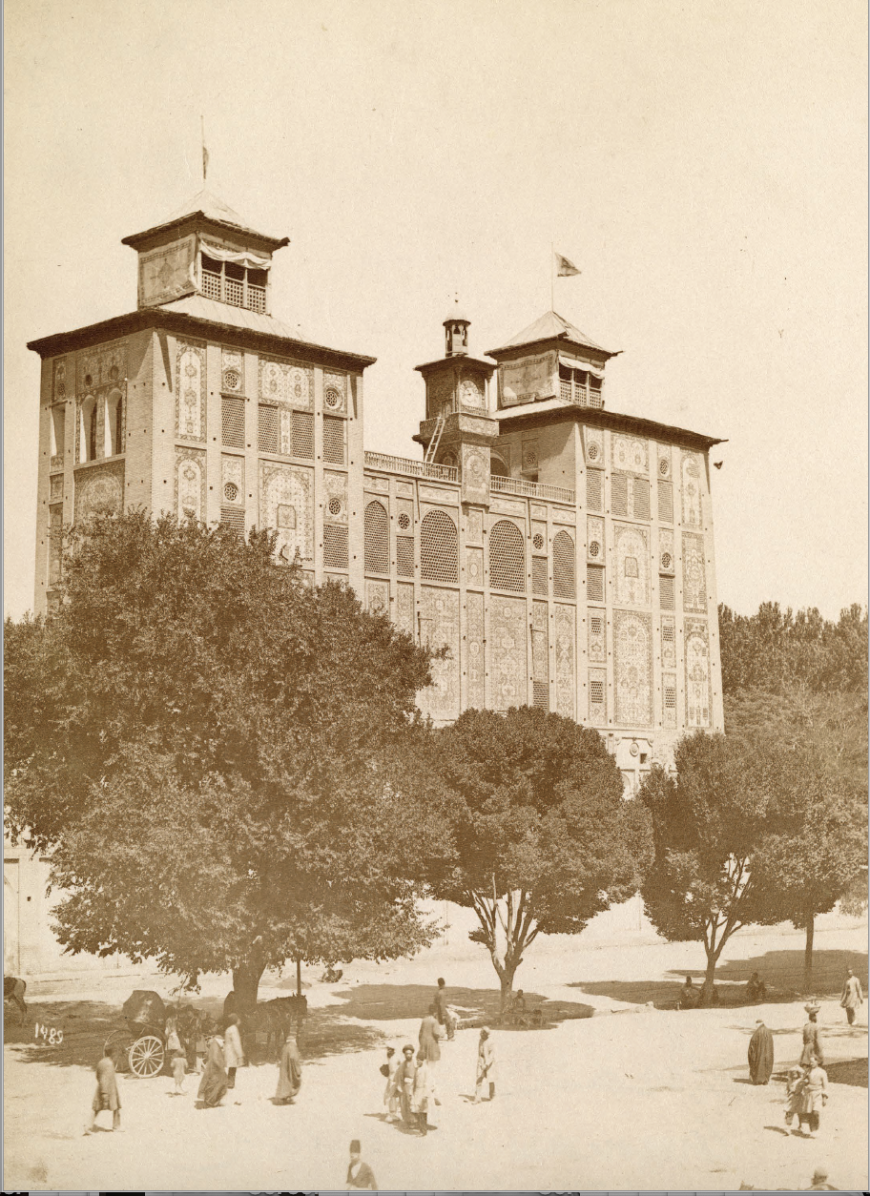
Clock tower of Golestan Palace in Tehran (P. 1114 / N. 23650)
